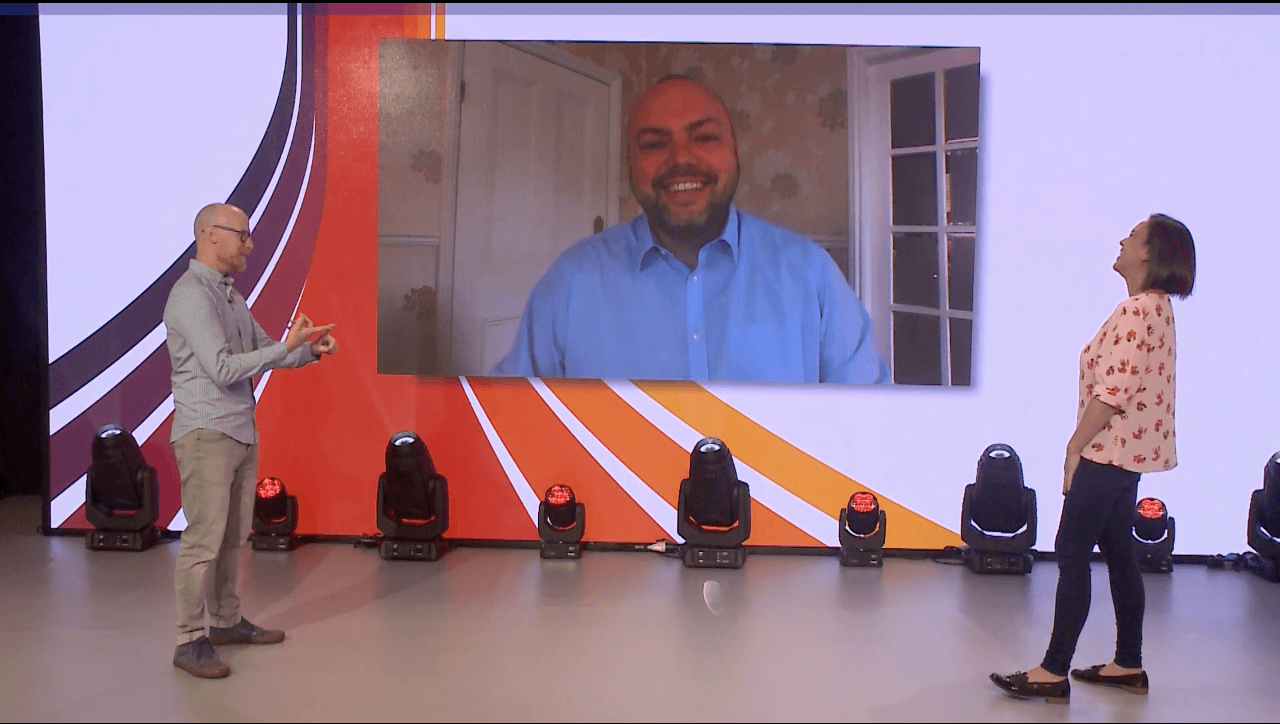The consensus in the meetings and events industry is that the pathway back to live events will involve a hybrid model as the stepping stone. And since this format has already seen success in parts of the world, such as Asia Pacific, it’s becoming a more viable option.
But what exactly is hybrid and how does it work? Essentially, it’s bringing together a smaller core of key delegates into the live environment (with all the necessary safety protocols in place) and ‘plugging in’ other participants from around the world virtually through live web streaming technology.
Here, we detail numerous important factors to remember when considering hosting a hybrid meeting or event.
Key considerations for your hybrid event
Timing is everything
Firstly, time zones. It sounds counter intuitive, but the delegates who aren’t physically at your live event actually dictate its kick-off, not the other way around. Because you want to maximise your audience participation and engagement, you need the start time to be friendly to as many time zones as possible. This may mean starting later in the day, and having a shorter live experience, or planning your programme differently and have the ‘kick off’ speech in the middle of the day rather than the beginning.
This brings me to the second point, attention span. Again, the virtual attendees also dictate the programme as those watching on a screen won’t have the same attention span as those sitting in a live environment. Your ‘on-stage’ presentation time will need to be shorter than perhaps it has been traditionally, with more ‘interactive’ Q & A sessions etc. that can include the virtual audience and make them feel like they are participating.
Another way to look at your programme is to break up the content into just live, then live and virtual pieces. This allows for a traditionally morning kick-off speech live. However, the sensitivity of other attendees who cannot be present needs to be taken into consideration here as they may feel undervalued by not being included in this core piece of event communication.
Consider your audience
A Hybrid event needs to work for both the audience in the room and online, you cannot just stream the live event and hope that will engage everyone. It won’t. The experience has to be planned for both audience types with opportunities for them to engage, participate and network. Mapping out the engagement journey for delegate types is essential, as is deciding who you invite to attend in person and online. Of course, clients may be prepared to put on a Hybrid event, but we will also have to consider whether delegates are willing to travel or stay away. Corporates can’t force attendance and need to be mindful of attendees concerns and anxieties. The great thing about a Hybrid event, is that it gives people a choice; attend in person or engage with the event online.
Related article: What Does the Attendee Experience at a Hybrid Event Look Like?
The right environment
There will be so much to consider when planning the first face to face events and Covid health & safety will require an article all of its own! However, start thinking about the kind of venue that will work for your event in terms of safety, numbers, seating, access and production capabilities. Hybrid events will need a more studio style approach making it look more like TV production than the traditional live set and stage. Wherever the audience is watching the experience it must work for them, so things like venue design, space, video displays, camera angles and sound quality all matter.
Hear BCD M&E’s Fernando Lonergan explain what it was like
attending PCMA‘s first hybrid event
Breakouts in the hybrid space
Another good use of the hybrid model is when it comes to breakout sessions. Smaller groups can join virtually alongside delegates at the live event. A strong ‘host’ here is recommended to help coordinate proceedings and make sure those online aren’t being left behind. Breakouts can be held simultaneously or be spread across the event.
Communication sensitivity
What must not be overlooked, and is probably more important than ever, is event communications. With a mixed audience of live and virtual, messaging and how that messaging is approached for each audience segment is key. Engaging content that strikes the right tone will help to build anticipation (and therefore engagement) for the event for those that are attending virtually. It may also help with the issues of why some delegates are at the event live, while others are attending remotely.
Related article: Using Content to Build a Sense of Community
Content is still king
Content is also incredibly important. Consideration must be given to both audiences and how they are consuming the same information. Emotive storytelling through film and animation can capture everyone’s attention – one played out live on-screen, the other direct to someone’s laptop. The cut back to the live presentation will keep the pace of the event fresh. Content for breaks must also be considered – do you have the same activities, or different activities for those in the virtual space? For example, quick energisers like a yoga session could work across both or just be put into place for the virtual audience.
The live environment
The live event set-up in a hybrid model is also likely to look very different to the big WOW set pieces we are used to. Environments are likely to feel more like a TV studio, with spaced out theatre style seating as opposed to cabaret and round tables, to allow more space for social distancing for both delegates and on-site crew.
Evening entertainment
We all know that the evening of a live event is what most delegates look forward to; a chance to let their hair down and mingle, work free, with all the other delegates, meet new people and network. Unfortunately, with social distancing not disappearing anytime soon, these sort of evening events have been somewhat curtailed. There are options however, even for those attending virtually and the emphasis will shift to entertainment. High level live acts and performers will be the new focus and the draw to many events, which can also be streamed live to the hybrid audience. Exclusive gigs and one-offs will be the order of the day to make an evening event seem special.
The event series model
If the hybrid solution is still not right for your audience or your content, another programme to consider is the event series model. This is suitable for those events where your messaging and content is repeatable in different markets around the world. Rather than the singular, traditional live event (or the hybrid model) you have smaller, localised live events (with all the required safety protocols in place). One master event is created as the blueprint model, with all the content, video, animation etc. required to deliver the messaging, and this is rolled out on a smaller scale in each required market. Here, the importance of having a global agency partner can’t be understated, as it will make it so much easier to deliver the programme, ensure consistent delivery and iron out any creases encountered on the blueprint event.


